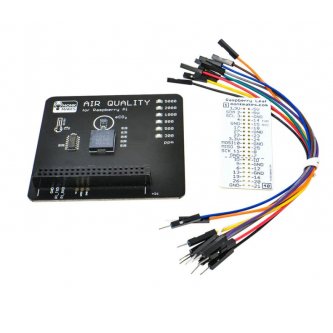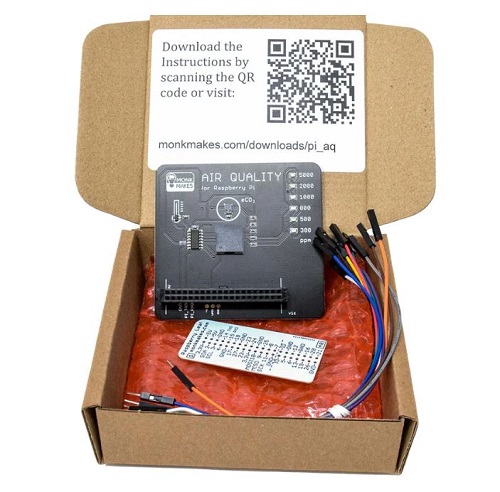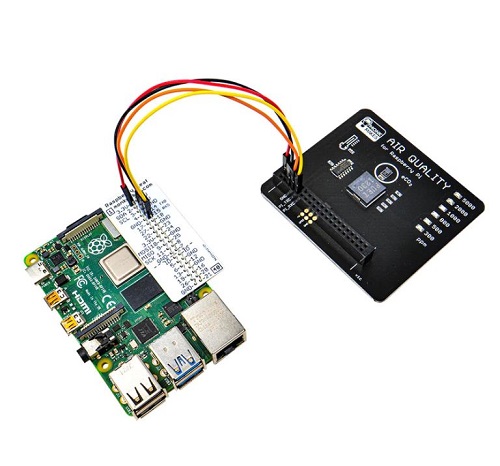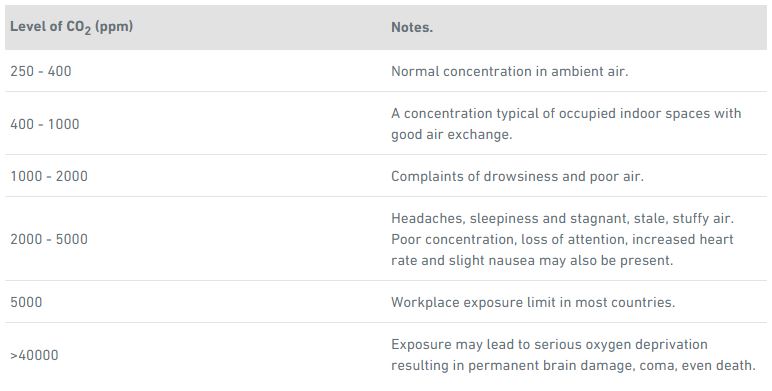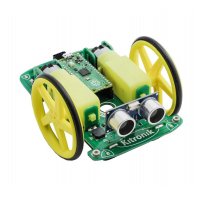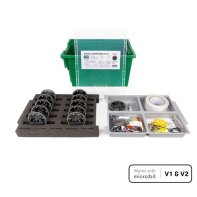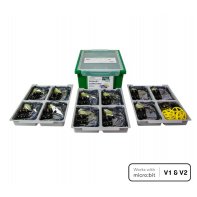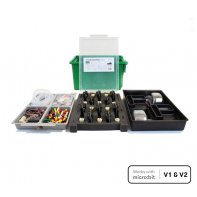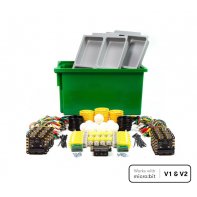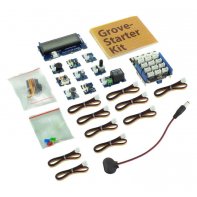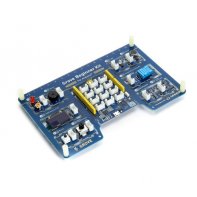- Home >
- Electro >
- Raspberry Pi > RaspBerry Pi Monk Makes Air Quality Kit
RaspBerry Pi Monk Makes Air Quality Kit
With the MonkMakes Air Quality Kit for Raspberry Pi 400 (and the Pi 2, 3 and 4) you can monitor the temperature and air quality of a room while learning about eCO2. No soldering required, display readings in real time or record them, board has a 6 LED display, built-in buzzer to set alarms. After following the installation instructions, perform the three experiments and learn as you go.
The kit comes with a 24-page full-colour booklet full of useful information. The kit was created for the Raspberry Pi 400, but is also compatible with the Pi 2, 3 and 4.) There is an LED power indication on the PCB.
MonkMakes RaspBerry Pi Air Quality Kit
The MonkMakes Air Quality Sensor Board is the basis for the MonkMakes Air Quality Kit for Raspberry Pi. The board includes a TMP235 temperature sensor and a CCS811 VOC sensor. There is also a basic buzzer and a raw 6 LED display to show the air quality measurements. To alert and notify the user, program the Pi to collect data from the air quality map sensors and then transmit it to the LED display and buzzer. A power indication LED is also present, allowing you to quickly determine if the board is powered.
Simply install the air quality board and start programming to connect directly to the Raspberry Pi 400 GPIO ports! By using the GPIO template and jumper wires provided in the package, the board can also be used with other versions of Raspberry Pi computers, such as the Raspberry Pi 4 Model B.
A full colour instruction manual containing all the details you need to get the most out of your kit is included in the package. It explains how to get sample programs, connect the kit to a Pi (400, Pi 2, 3 or 4), configure the Pi to read the board, and get and use the Thonny editor. Once the setup is complete, it's time to proceed with the three experiments: monitor temperature and eCO2 levels, set an alarm for experiment 1, and record the data.
This kit is the ideal option for anyone wanting to learn how to monitor air quality at home, as it comes as a single packaged unit.
- Use the Raspberry Pi to assess the air quality of a space.
- Soldering is not required.
- It is possible to display readings in real time or record readings over time.
- The card has a 6 LED display that shows the air quality.
- Use the built-in buzzer to set alarms.
- The package comes with a 24-page full-colour booklet that is packed with useful information.
- After following the installation instructions, perform the three experiments and learn as you go.
- An ideal gift for Raspberry Pi owners.
- This kit was created for the Raspberry Pi 400, but is also compatible with the Pi 2, 3 and 4.)
- There is an LED power indication on the PCB.
- ATTENTION: The Raspberry Pi is not included.
Contents of the MonkMakes Air Quality Kit
- 1 x MonkMakes Air Quality Sensor Board
- 1 x Pack of female-to-male jumper wires.
- 1 x Raspberry Leaf GPIO Template.
Air quality via the Kitronik kit
Instead of CO2, it is a combination of gases known as volatile organic compounds (VOCs) that the Monk Makes Air Quality Map sensor measures when assessing air quality. These gases can be used to accurately estimate the CO2 equivalent or eCO2 since they increase in an indoor environment at a comparable rate and under the same conditions as CO2.
Our health is directly influenced by the amount of CO2 in the air we breathe. From a public health perspective, CO2 levels are particularly important because, simply put, they are a measure of how much of someone else's air we breathe in. Humans exhale CO2, so if there are several people in a poorly ventilated space, the amount of CO2 will steadily increase. This is quite similar to the viral aerosols that transmit coronavirus, influenza and the common cold, as everyone exhales them simultaneously.
- 1 x MonkMakes Air Quality Sensor Board
- 1 x Pack of female-to-male jumper wires.
- 1 x Raspberry Leaf GPIO Template.



